In 2004, the devastating Southeast Asia Tsunami stimulated charity from all over the world. Fresh drinking water was one of the prime concerns in this disaster and MSR (Cascade Designs) had been specializing in back country water purification for years. They lept into action, delivering many of their water purification devices to the area. Unfortunately, they learned some hard lessons along the way. In their own words, they admitted that the philanthropic effort, though well intended, was humbling. The logistics were complicated, so delivery of the devices was hindered, and once there they discovered that the size of the devices, intended for backcountry users, were impractical in the face of the enormous demand for clean water. Entire families and communities could not depend on individual devices. MSR took those humbling lessons to heart and developed a new division called MSR Global Health.
The SE200 Community Chlorine Maker is the first product released by this division and is intended to support the fresh water needs of families and small communities in developing nations or disaster struck areas. I was immediately intrigued by this product when it was brought to our attention by a loyal SurvivalBlog reader and I ordered two of the units direct from Cascade Designs. According to the specifications, one unit will produce more than enough drinkable water, but I always try to operate under the principle of “two is one and one is none”. You never know when a failure of a critical system will take place, and if this unit delivered on its promises then it would become part of the critical hardware in our preps. I intentionally did not notify MSR that the purpose of the purchase was to evaluate the unit for SurvivalBlog, as I wanted to experience the whole supply chain as one of our readers would.
First Impression
The units arrived within 10 days of ordering it. Opening the first unit to inspect the contents, I discovered that the small dosing spoon was missing. While not a big deal, the spoon aids in dosing 5-gallon or 20-liter containers, and it either showed that the unit had been previously opened or that quality control leaves a bit to be desired. I have it on my list to contact them to obtain a replacement, but if they don’t then a small 5ml syringe will work just as well. In working with this review, I only purified water in 1-gallon containers, so a small syringe actually provided more accurate dosing control. The second unit had the dosing spoon in it though. Here is a quick inventory of the contents of the case:
- 1 plastic carrying case
- 1 set of instructions
- 1 clear plastic bottle to hold salt brine (400ml)
- 1 opaque plastic bottle to hold the chlorine solution (250ml)
- 1 dosing cup (100ml graduated every 5ml)
- 1 dosing spoon (5ml)
- 1 salt packet (50g)
- 1 packet of chlorine test strips with indicator
- 1 battery cable clip
- 1 SE200 Chlorine maker
One of the first things that strikes you is that this unit is designed for emerging countries. Rather than print instructions in 50 different languages, MSR went with a pictorial concept. The operation is simple enough that just four pictures located in the lid of the box are enough to figure out the operation.
Eager to try it, I operated the unit solely from the pictures in the lid of the case and had the unit operating within 10 minutes of first opening the case and had my first batch of chlorine six minutes after that. The instructions are as simple as:
- dumping the salt packet in the clear bottle and filling to the water line.
- Shaking and waiting until the salt is dissolved.
- Measure out 50ml and pour that into the SE200.
- Connect the SE200 to the battery (observing polarity).
- Turn the unit on, and wait until it is finished.
When the unit was connected to a 12V battery, it ran a self test, flashing the LEDs one at a time, purple, red, then white. After the power button was pressed, the white LEDs illuminated and stayed on during the duration of the run. During the run, the salt brine fizzed and you could see a small wisp of gas floating out of the top of the maker while the smell of chlorine (similar to that of running a pool) permeated the area around the SE200. When the unit finished, six minutes later, it beeped a quiet beep and the white LEDs began to slowly flash until the unit was disconnected from power.
Retrieving a 1-gallon container, I filled it with water from the sink faucet, which produces well water (not chlorinated, city water), added 1 ml of the SE200-manufactured chlorine solution, and tested the water mixture with the included test strip immediately. The strip indicated a chlorine concentration in the treated water of about 2 ppm, which is a bit on the high side. Considering that the chlorine was added to tap water, which is known to be clean and that in practical use the water that you will be treating is probably not as clean and you’d let it sit to work for an hour or so, I’d call it an acceptable run.
Overall, the unit performed as described, was simple enough that a child can use it, and was convenient to handle.
Techie Stuff
While the SE200 produces chlorine, it also produces other byproducts as well. You can visually see this when you pour the chlorine solution into the dosing cup and observe the color. The salt brine originally starts clear to light milky white, yet the chlorine solution has a distinctive yellow/brown color to it along with some solids that can be seen floating. A quick trip to Wikipedia reveals that the electrolysis produces hydrogen gas (H2) which bubbles out, chlorine gas (Cl2) which stays mostly dissolved in the solution, and sodium hydroxide (2 NaOH) which is the yellowish solid seen floating in the water. Impurities in this salt brine solution will also obviously produce other unknown compounds, so it’s best to start with the cleanest water possible for the brine.
The unit runs off of a 12-volt battery. The battery shown in these pictures is one that I had on hand (a monster 255AH unit), but the SE200 will run off of any 12-volt battery. A standard car battery (~70 to 80 AH) will run the unit for 200 batches (40,000 liters of treated water). I am considering a small 3.6AH gel cell packed in with the SE200 when I move it to a Pelican 1200 case for emergency operation. That will get me several (perhaps 10) batches of solution for 2000 liters of treated water before I need to seek alternate power. When started, the unit draws 2.8 amperes, dropping to 2.2 amperes within 90 seconds for the duration of the run. This level of power usage is easily solar powered with even the most mediocre portable solar system. Several batches will use less power than charging the typical cell phone.
The unit does dump considerable energy into the brine solution. Starting at 70°F, one run raised the brine temperature to 112°F. Out of curiosity, I ran the same brine solution through another run, which raised the temperature to 130°F and did indeed double the strength of the solution. There is, however, no need to produce double (or more) concentration levels as it only takes six minutes to produce enough to treat 200 liters of water to the 1ppm level.
Also, when you use the test strips, make sure you are testing your treated water, not the chlorine solution from the SE200. This is a common error and you will not get a good reading on the strips (The included strips appear orange when tested this way). The point of the test is to test for residual chlorine in your drinking water to determine if you are disinfecting it enough. There is no point in testing the produced solution because you already know it contains chlorine.
A Few Warnings
Warning one: The fact that you can smell chlorine (and see occasional wisps of mist floating out of the SE200) and the fact that chlorine gas is poisonous in this form should be a strong indicator that you should only use this unit in a well-ventilated area. Do Not attempt to “smell” the chlorine close up to test the concentration. There is no warning about this on the container because this is a product that is not intended for the litigious U.S. market. You have been warned!
Warning two: Free hydrogen gas is produced by this unit, albeit in small quantities. You are also tethered to the battery by a short power cord with battery clips. Attaching the battery clips may produce a small spark. Since hydrogen is highly flammable (okay, explosively so) you do not want to run this unit in an enclosed space. Again, because this unit is not intended for the litigious U.S. market, there is no warning.
Warning three: Chlorine sanitization and oxidation are good for the vast majority of water-borne “bugs”. However, cryptosporidium is highly resistant to chlorine disinfection and UV light is the easiest compliment to this process to inactivate it. Sanitizing the drinking water in storage containers is certainly acceptable, but you should let it sit in a UV transparent container in direct sunlight before consuming (or provide some other method of removing cryptosporidium, such as super fine filtering, if the water comes from a questionable source).
Warning four: Chlorination deals with organic contaminates, which is your biggest concern in an emergency situation. It does not affect chemical contamination, heavy metals, or other such contamination. While the SE200 is fine for emergency use, long-term considerations require the use of other forms of purification and filtration. You can effectively think of chlorination as equivalent to boiling the water.
Disappointments
- The plastic storage case is flimsy, the insert holding the components is “cheap”, and I can see where it isn’t going to survive the rough handling that emergency situations can throw at it. However, it is roughly the size of a Pelican 1200 Small Case, so I’m going to transfer the contents to one of these.
- The plastic bottles are not microwaveable. (Don’t ask how I know.) I guess emerging countries are not expected to have microwave ovens on hand. But that does bring up the point of what to do when the bottles eventually break. I’ll give the specific instructions in the next section below.
- The connector between the SE200 and the battery clips is annoying. I get it; it’s inexpensive and it works, but it took me all of about five seconds to determine that it was coming off and being replaced by Anderson Power Poles (since all of my other 12V equipment has the same connector.
- The power wire on the SE200 is flimsy. While the unit doesn’t draw very much power and doesn’t need a heavier cord for operation, it just feels “cheap”. The addition of Anderson Power Poles will allow interchangeability with the power cords of my other equipment, so I’ll only have to deal with the short pigtail coming out of the unit itself.
- Why isn’t MSR marketing this unit to the prepping world!?! If you’re storing sodium hypochlorite solely for the purpose of water disinfection, this unit completely does away with the need for that chemical (and the associated complications). Storing salt is far easier and won’t deteriorate with time.
What to do when things go wrong
Eventually, the plastic bottles will break (or you will microwave it, like I did in an attempt to speed up the dissolving of salt). What then? The large salt brine bottle is 400ml and you’re adding 50gm of salt to it. You end up with a concentration just below the saturation point. In the cold, you will have trouble getting all of the salt to dissolve. You don’t actually need this bottle if you have the ability to store a clean salt brine solution elsewhere. However, if mixing the solution on-site in a replacement bottle that is not the same size, just mix the brine solution as normal. Let the solids settle to the bottom and pour off the brine from the top to use. If there isn’t enough salt in the solution, the SE200 will flash the purple light letting you know. Mix a little more salt and try again.
You are dosing 20 liters of water with 5 ml of solution to produce roughly 1 ppm chlorine. This means that the solution you produce is roughly a .1% chlorine solution (approximately 60 times weaker than household bleach), but it’s still strong enough to matter when dosing. Rather than measure in drops like you would with household bleach, you measure in milliliters. If you loose the dosing cup or spoon, a medical syringe works just fine. In most cases, I think they work better than the spoon and cup. The dosing is simple. Use 1cc per gallon, 5cc for a 5-gallon (or 20 liter) container, and a whole batch (50ml) for a 55-gallon (or 200 liter) drum. If you lose the dosing cup, the SE200 is still marked, so you know how much brine to put in it.
You are producing an alkaline solution (because the hydrogen gas bubbles off), and the electrodes will eventually get a coating of scale on them. During my testing, there was no noticeable buildup on the electrodes, but if the purple light stays lit even after you verified the brine solution, it’s a simple matter to clean the SE200 by filling it with 50ml of vinegar and swishing it around. Just like your coffee pot, it’s probably easier to put it on a regular cleaning scheduled with vinegar rather than waiting for the buildup to interfere with operation.
Recommendations
- Use this as an emergency water source (especially when traveling). It fits in a BOV without hardly even noticing it. However, it is plastic and only intended for a life of five years. If you need water for a longer span of time, see the SurvivalBlog article An Alternative to Calcium Hypochlorite, by TLS for a long-term, permanent solution. I have two. One goes in the bugout trailer permanently, and the other moves between vehicles when we are taking road trips. It’s small enough that it isn’t even noticed. The old American Express adage certainly fits this unit: Don’t leave home without it.
- Carry an additional filtration unit, preferably an activated carbon unit, like the MSR MiniWorks or the Katydyn. The SE200 will not remove heavy metals, chemical contamination, or cryptosporidium. The activated charcoal filters will do a much better job at that. Our plan is to use the SE200 for all water usage and then water that is consumed will be run through an MSR MiniWorks (if vehicle bound) or a Berkey (if bugout trailer bound).
- Remember that the chlorine takes time to work. You need to wait at least 30 minutes (preferably an hour) after treating the water before using it. If you are in a hurry, this is not the method to use. However, if you are needing a large quantity and have an hour or more of time, this will get you what you need.
- Swap the case out with a Pelican 1200 Small Case. The first time your load shifts and smashes the box (or you drop the box), you’ll thank me.
- Remember to keep your chlorine residual test strips handy and current. They are inexpensive insurance that you are drinking water that is safe. They are not just used to verify that you produced chlorine but to verify the quality of the water you are drinking. If you dose the water and 30 minutes later there is no residual chlorine in it, you probably need to dose it again before using it. The chlorine is used up as it disinfects the water. No signs of chlorine means no disinfecting is occurring.
- Despite the fact that the water tests fine, try not to drink murky water. Let the sediments settle out or filter it before you drink it.
- Try using it before you need it. It’s simple to use, but you don’t want to discover a problem when you need it most.
- 50gm of salt makes eight batches (1600 liters of treated water). It’s easy enough to store salt and any salt will work, but I just buy an extra container of non-iodized salt every time or so that I’m at the store. The canisters are easy to manipulate and store on shelves.
The SE200 is so easy to use and convenient to store, it belongs in every person’s preps. Whether you are prepping for TEOTWAWKI or just for the next hurricane or wind storm, or even just traveling to another country on business, the peace of mind you get by knowing you have access to drinking water, no matter what, is well worth the price. I bought two and I’m keeping them. I’m recommending this to all of my friends as well. There are a few caveats, such as having to wait for the process to work and the need for some sort of 12V power, but I can’t think of any other product that will treat the same amount of water with the same ease. Just take the recommendations to make a few upgrades and get the battery, extra test strips, and lay up the salt supply. Goodbye sodium hypoclorite!
Where to Get it
- SurvivalBlog advertiser Ready Made Resources (carries the entire MSR line of products). Their retail price for the SE200 Community Chlorine Maker is $239. What a deal!
- Cascade Designs online store










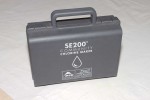
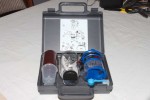
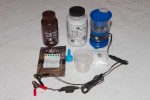
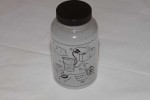
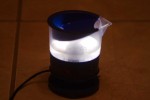
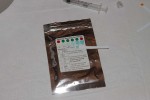
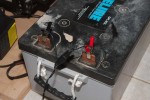
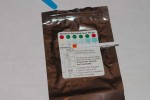
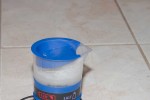
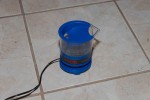
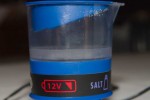
Sodium Chloride has a fairly flat solubility curve becoming saturated in the 25% range, so heating does not increase the concentration very much……
Just curious if anyone has had any luck with making their own version of these with all of the DIY instructions and YouTube videos on these generators. While MSR makes great products, it seems the scientific principle has been in use for years in developing countries.
Very good read. MSR’s experience in real disasters exposes weaknesses in equipment and in relying on simple solutions to the water problem. Hats off to MSR for their courage and willingness to fail and learn. Not many have such honesty!
I store a LOT of calcium hypochlorite to run my Lakewater System, which processes stream water for our cabin full time. I haven’t seen the corrosion problem yet, but I know it is a real concern. My interested in this kit stems from the fact that someday the stockpile can run out or age beyond effective performance.
UV light does kill Giardia and cryptosporidium, however, sunlight intensities to not work on these two pests.
I offer this web page to shed more light on the UV issue and water purification. http://www.watertreatmentguide.com/ultraviolet_systems.htm
In this article it gets into how MUCH UV is needed to kill various pathogens, and some are much tougher than others.
Not long ago, Milwaukee experienced a Crypto outbreak that infected 100,000 people, and killed 400. This spurred the city to immediately install powerful UV sterilization equipment in their treatment plants. [the morality rate would have been MUCH higher had the health care and pharmaceutical system been crippled or destroyed]
The Steri-Light units are proven very effective. Mine will handle a flow rate of 8 gallons per minute of biologically unsafe water, provided it is filtered down to no more than 5 microns in particulates. My system filters down to one micron (absolute) which captures Giardia and Crypto, and many bacteria. The in-line chlorinator and UV Steri-Light handle the rest. Production rate is 4.5 gal/min on my system because the water line is 200 feet long from the creek, and 12 feet in elevation….so the effluent gets twice the exposure time in the Steri-light. : )
I’m forwarding this excellent write-up to friends and clients.
Jim’s objective and straight analysis is appreciated.
Hint. Instead of getting your Anderson Power Pole parts through Amazon, compare costs with Mouser. I’ve found Mouser to be cheaper.
Aloha HJL,
I like the well-designed MSR unit and your suggestions as to how to render it more durable are excellent.
Have you studied the SwimforHim units? I would be interested in a side-by-side comparison. The SwimforHim units can be had for a $50 donation to the ministry; even using Math for Marines I can see that I would get up to five units for the cost of the MSR.
Comments, Sir?
@Ken,
I did purchase one of those after I had the MSR unit. You can indeed use it, but it is definitely not as convenient as the MSR unit. You have to pour the water through the unit more than once in order to achieve the ppm that you need. The MSR is a set-and-forget unit. You fill it with the brine, push the button and wait for it to flash that it’s ready. You then have a known concentration that you can use.
You use resulting solution per the pictorial instructions (1 scoop for 5 gal/20l or the whole batch for a 55 gal drum). We also use the whole batch in about a gallon of water when camping to form a bleach solution to disinfect dishes.
Both systems work, I just find the MSR easier to use.
Thanks Hugh.
I appreciate the prompt answer. Great point about using a whole batch as a disinfectant or sanitizing solution. This would go well in the medical tent just for that purpose. The options are endless.
Thanks for the review, and the reply.
Kb